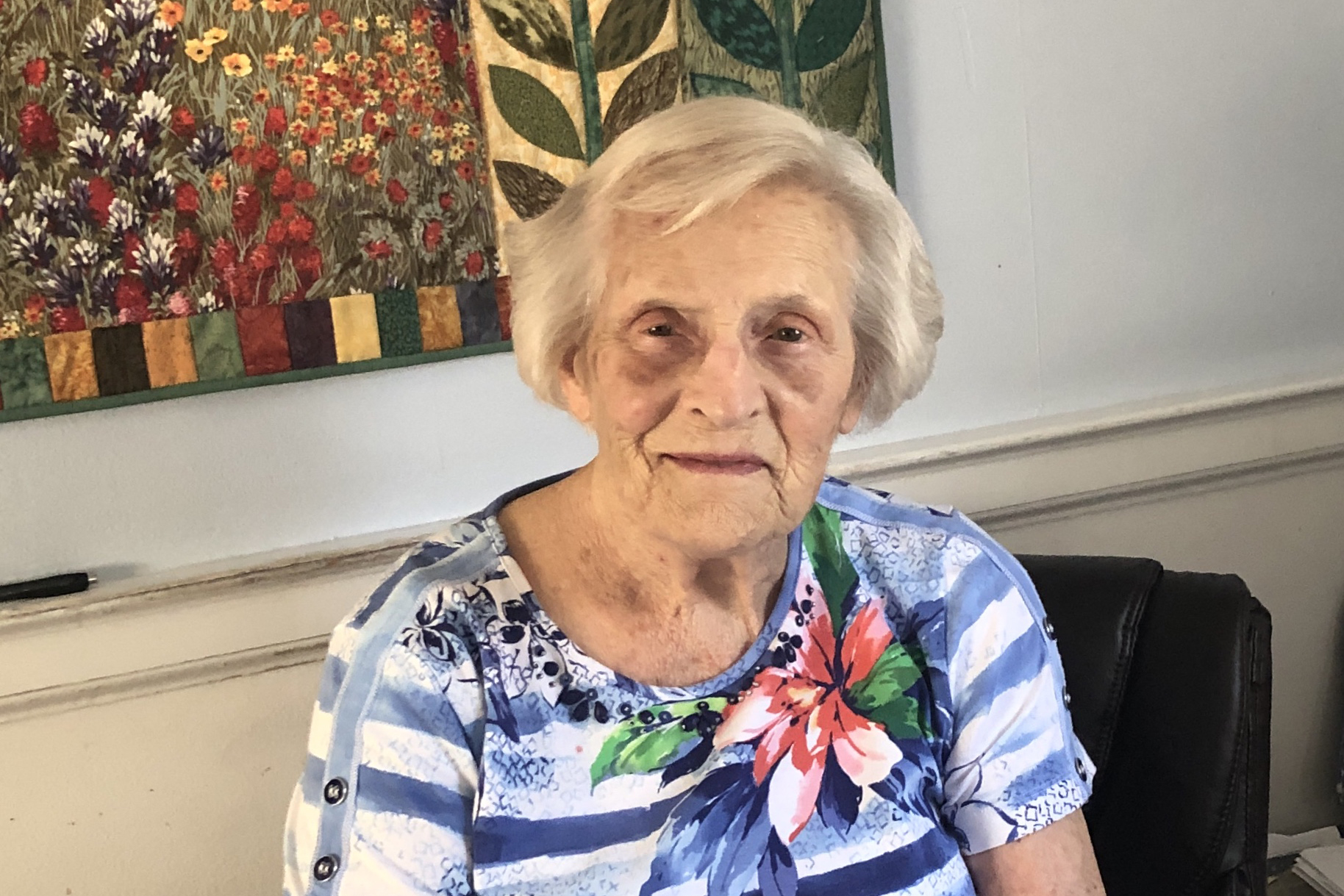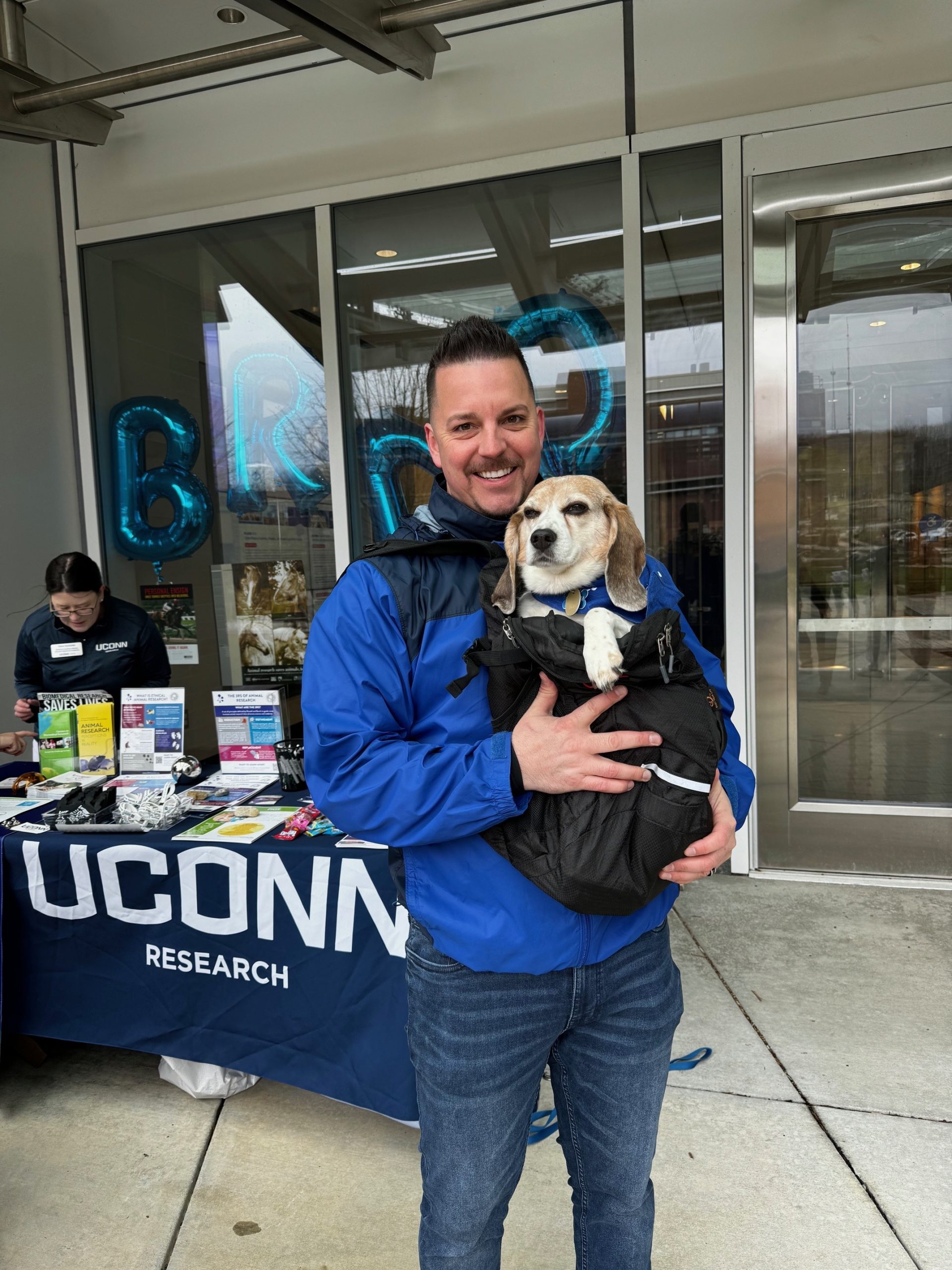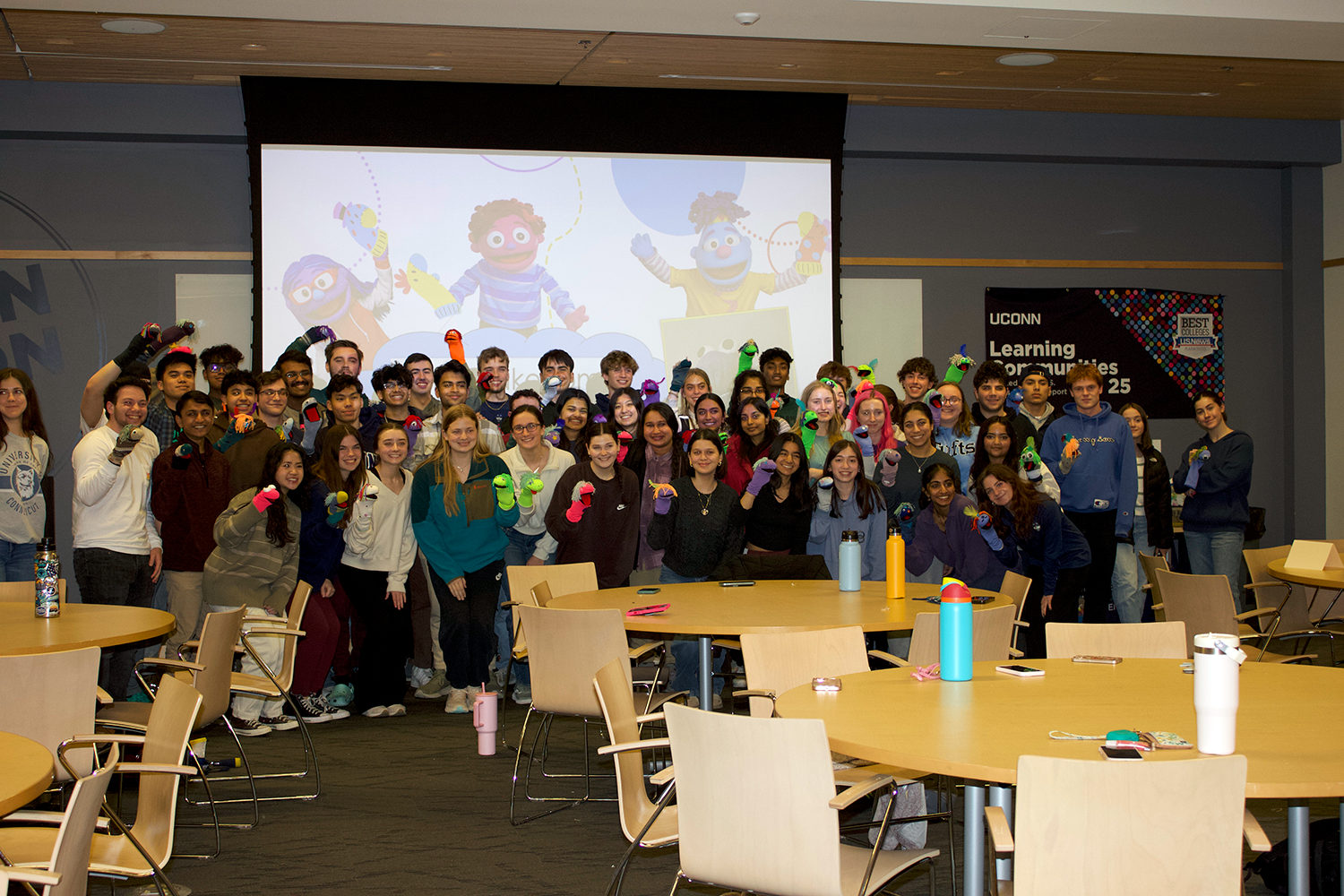In a period of less than four weeks, Dorothy Graves suffered the worst headache she’s ever had, had part of her skull removed to relieve bleeding and pressure on her brain, and turned 97 years old.
There may have been a lot of uncertainty in the predawn hours of Aug. 1, but when the emergency responders arrived at her West Hartford home, one thing was certain: where they would take her.
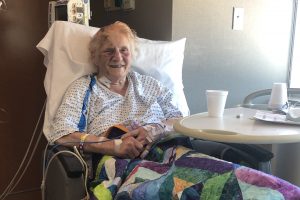
“There was no question I was going to UConn,” Graves says. “I’ve had such good care here.”
“She was in the ER, to the ICU, and then they kept evaluating whether to operate – her age, we obviously knew she was a high risk, and the neuro team came in and they decided we could sit here and watch it and it could get worse, or we can try and drain it,” says daughter Mari Steeno.
“Those were the choices, and I said, ‘We should take a chance,’” Graves says. “So we went ahead.”
Dr. David Choi, the UConn Health neurosurgeon on call, was prepared to have a difficult conversation with the family about goals of care.
“When I walked in there I was taken for a loop because she was wide awake and talking with me,” Choi says. “Usually with a bleed of that size and that much brain compression, patients are not in good shape, they’re not fully alert and able to participate in that discussion.”
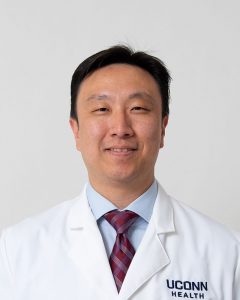
Graves was suffering a brain bleed known as a subdural hematoma. Treatment usually involves a craniotomy, the temporary removal of part of skull, so the surgeon can drain the blood and relieve the pressure on the brain. It’s a risky procedure, even more so for someone in her mid-90s.
“Because her neurologic exam was so good, I felt she would be a good candidate for removal of that blood,” Choi says.
“I told him he saved me, he was my miracle worker,” Graves says.
Steeno, who lives in California wasn’t able to get to her mother’s side until the morning after the surgery. By then, her care team already was removing the breathing tube.
“That’s pretty unusual, a really quick turnaround,” Steeno says. “She was breathing on her own, her vitals were stable – a sign that this 96-year-old patient came through this serious operation successfully and quickly.”
Within a week she was back in her home, where she would start physical and occupational therapy.
“She was pretty independent before the operation, and that’s what we’re trying to preserve,” Choi says.
A retired nurse who worked into her 70s, Graves says she has longevity in her family, particularly among the women. She has 15 great-grandchildren.
“I’m a quilter, and that’s what kept me going,” she says. “It’s math, it’s dexterity, it’s everything. I’m sure that’s what kept me going.”
That, and perhaps some divine intervention.
“All the time I’m laying here like this and I’m looking at the ceiling, and I’m talking to God, I said, ‘There is a God because You’re over there helping me, I know,’” Graves says, then recalling, when she was able to speak again, “I asked for the chaplain, and she’s sitting right here. I said, ‘You are all in white, you have white feathers all around you. You’re my angel.’ Somebody’s up there watching me, believe me, I know it.”
“She’s an awesome lady, she’s so sweet.” Choi says.
Monday, she celebrated her 97th birthday.
And Steeno says her mother’s already “back to her strong, independent, determined self. Mom has lots of visitors and will continue quilting!”
